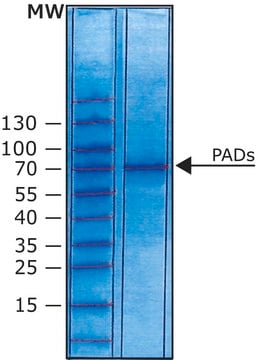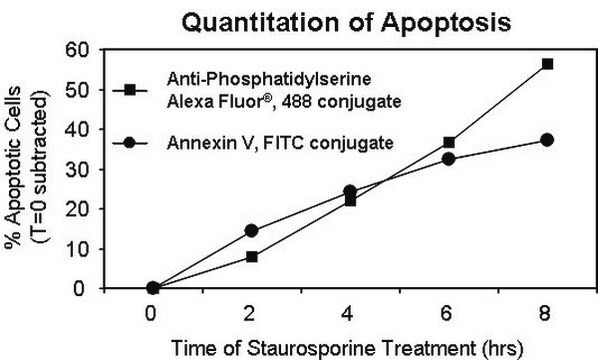506282
Cl-amidine
>95% (HPLC), solid, PAD inhibitor, Calbiochem®
Synonym(s):
PAD Inhibitor, Cl-amidine, N-α-benzoyl-N5-(2-chloro-1-iminoethyl)-L-Orn amide
About This Item
Recommended Products
product name
PAD Inhibitor, Cl-amidine, Cl-amidine is a cell-permeable pan PAD inhibitor (IC₅₀ = 0.8, 6.2, and 5.9 µM for PAD1, PAD3, and PAD4, respectively). Inactivates the calcium bound form of PAD4 in an irreversible manner.
Quality Level
assay
>95% (HPLC)
form
solid
manufacturer/tradename
Calbiochem®
storage condition
OK to freeze
color
white
solubility
DMSO: 50 mg/mL
shipped in
ambient
storage temp.
−20°C
General description
Warning
Reconstitution
Other Notes
Li, P., et al. 2010. Oncogene21, 3153.
Luo, Y., et al. 2006. Biochemistry39, 11727.
Legal Information
Storage Class
11 - Combustible Solids
wgk_germany
WGK 3
flash_point_f
Not applicable
flash_point_c
Not applicable
Certificates of Analysis (COA)
Search for Certificates of Analysis (COA) by entering the products Lot/Batch Number. Lot and Batch Numbers can be found on a product’s label following the words ‘Lot’ or ‘Batch’.
Already Own This Product?
Find documentation for the products that you have recently purchased in the Document Library.
Customers Also Viewed
Our team of scientists has experience in all areas of research including Life Science, Material Science, Chemical Synthesis, Chromatography, Analytical and many others.
Contact Technical Service







